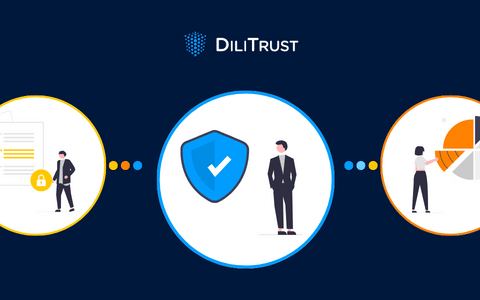The ability to contribute to all corporate governance issues on a board is a crucial part of the dexterous skills required of all members. Today more than ever boards are paying more attention to the disruptive digital transformations taking place in their industries. However, according to 2019 research carried out by Deloitte, boards are “rarely” examining the impact of this digital transformation on the “role of [the] board itself”. This is a critical mistake. Learn how to steer your board in the right direction with our key 3 tips.
1: A Directors Eye View
Technology is paramount to increasing efficiency and productivity. Board Advisory groups are in agreement. In 2018, the National Association of Corporate Directors Blue Ribbon Commission report advised directors “to keep finding ways to tap into fresh, unconventional thinking in order to improve oversight of the risks and opportunities posted by disruptive forces and events, including, but not limited to, the seismic shifts in the way we live and work that are being accelerated by new and emerging technologies”.
The NACD in their report also reinforced that the role of board members in 2019 is of supervision and stewardship but also, to keep a fixed eye on all things digital. Research from Deloitte has also pointed to the “increasing expectations around board oversight”. Increasing the transparency and availability of crucial information is considered pivotal to allow board members greater insights, especially “during times of stress and regulatory inquiries”. The same is true of the importance of rapidly evolving topics like digital. Board members who are well acquainted with trends, new research and developments about emerging technologies are better prised to do their jobs.
2: Alleviate Director Tension with the Right Agenda
While directors today are increasingly digesting more and more information on a range of topics, it is key that management are aware of the pressure placed on the board to do just that. Tension can quickly escalate when management have considerably raised expectations regarding the timeline allowed for reviewing more and more critical documents.
The NACD in their report advise that a board composition which reflects diversity can go a long way to maintain a boardroom culture that in the face of a digital transformation, remains open to varied discussion and is constructive in its criticisms. The Harvard Business Review argue that ‘there is common misconception that digitally savvy executives (regardless of profile) are less experienced, and therefore not capable’.
However, this is not enough in the face of disruptive new technologies. Instead, time must be carved out on each agenda to discuss digital disruption in and outside of the board room. Board members need to focus on how technology will affect long-term strategy and value creation as well as their role in the future. This is critical. According to EY’s 2017 Global Review, ‘4 in 10 companies could be displaced by rivals in 2020’.
3: Adopt a Board Portal
The digital transformation sweeping the world, in and outside of the board room can give directors plenty of food for thought when the numbers are crunched. PWC forecast that technology can increase efficiency and contribute to global GDP gains of around $15tn by 2030. However, in and outside of the boardroom, ‘digitalisation has so far been patchy’ according to the Financial Times.
One key tool board of directors need for their digital transformation is a digital board portal. Board members and management can facilitate and be more proactive in tackling their responsibilities with crucial information available to them on or offline via multiple devices including tablet, laptop and PC. DiliTrust Exec is a secure board portal that harnesses leading technology with the highest level of security possible for board members. Board members can rest assured that our portal meets stringent standards in terms of data security, compliance and efficiency.



